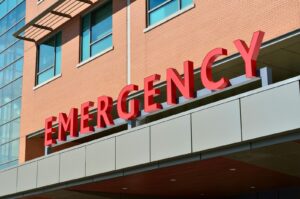Why we can’t afford to ignore air pollution
Zak Bond, policy officer at the British Lung Foundation writes for Air Quality News about why we can no longer afford to ignore air pollution as we recover from Covid-19.
The COVID-19 pandemic has been deeply challenging for us all, leading to some dramatic changes to how we live our daily lives.
But one unforeseen benefit has been the sharp decline in air pollution levels across the world, due in part to significant drops in transport use.
During lockdown in the UK, we saw marked reductions in the levels of NO2 — a gas which can irritate and inflame the lining of our airways.  Evidence published by the Air Quality Expert Group also shows that PM2.5 levels were lower than they would have been throughout a normal 2020.
Air pollution is a public health crisis. For people living with a lung condition, like asthma or COPD, air pollution can cause a flare-up of symptoms, such as coughing and difficulty breathing. Recently, the British Lung Foundation and Asthma UK surveyed 14,000 people with a lung condition and found that nearly 2 million people noticed an improvement to their symptoms likely due to better air quality during lockdown.
It has been refreshing to see how throughout the coronavirus crisis, public health has rightly been the key driver of government policy.
As we begin to recover, it is vital that public health remains central to how local and national government thinks and acts.
The government must now recognise that we all need to protect our lungs long term, as well as seeking to avoid further waves of COVID-19.
There are emerging links between Covid-19 and air pollution
An emerging body of research from academics across the world has shown a possible relationship between higher levels of air pollution and increased risk of dying from COVID- 19.
There is even a suggestion that coronavirus may be able to piggyback on small particles as a route into the lungs. However, it must be said this is very early-stage research and much of it has not yet been subject to rigorous peer review.
But whilst the science behind the relationship between air pollution and COVID-19 needs to develop, we can say with confidence that both COVID-19 and air pollution have a major impact on our lungs.
Many people whose lives are worst affected by air pollution — including some of those with COPD and asthma — are those who are also most at risk from COVID-19.
We must make sure that the people recovering from COVID-19 and managing other respiratory illnesses have clean air to breathe, both during and after the pandemic. If we are to achieve this, we must start thinking about the role of active travel, clean air zones and our clean air laws.
We need to start prioritising walking and cycling
The Transport Secretary’s announcement of £250 million of funding for rapid changes in towns and cities to promote walking and cycling, and new guidance to local authorities about the need to take action, are welcome.
But it is crucial that local authorities implement these changes quickly and effectively. We must not see a situation where the only ones to act are local authorities who were already ahead on active travel measures.
A rapid shift to walking and cycling is the right thing to do for clean air, as it will ensure that we avoid gridlock. Everyone who has walked into the road to keep their distance, or who has seen the confidence with which young children can cycle given a safe space to do so, knows we need a step-change in the allocation of public space away from the car towards active forms of travel.
Due to physical distancing, safe capacity on public transport is significantly lower than before.
If everyone who normally uses public transport shifted to a private car, our streets would be in eternal traffic jams. Alongside a shift to active travel, it is crucial that public transport is back up and running safely at as high capacity as possible as soon as possible. This will ensure that we don’t see a rapid increase in the number of cars polluting our roads.
Some progress has been halted
London’s Ultra Low Emission Zone, which is now back in force after a brief hiatus, has seen a 44% decrease in NO2 levels in the city centre, demonstrating how charging zones can be highly effective in influencing the rapid behaviour change needed to quickly remove the most polluting vehicles from highly polluted areas.
Unfortunately, all existing Clean Air Zone (CAZ) proposals have been delayed until 2021 at the earliest, with Manchester in particular delayed until 2022.
CAZ implementation has been slowed by coronavirus at the moment when they are most needed. While it was right for local councils to prioritise the emergency pandemic response, it is crucial that we do not see further delays — to do so would compromise the wellbeing of the population.
The virus has also slowed down the passage of the Environment Bill, a key piece of legislation that commits the government to setting a new target for fine particulate matter.
It is crucial that parliamentary scrutiny of this Bill starts up again soon.
The most recent draft of the Bill does not provide the ambitious PM target that we need as we recover from COVID-19. Rather, it allows the government to wait until 2022 to set a target and does not state what the target should be.
The government must urgently commit to — at the very least — reaching the World Health Organization (WHO) guideline levels for PM2.5 by 2030 at the latest.
Time for action for a healthy recovery 
COVID-19 has demonstrated how important it is for the nation to have resilient lungs.  People in cities, towns and villages across the country must all be given the space to safely walk and cycle.
Those in the most polluted towns and cities need to be incentivised to leave their car at home through charging Clean Air Zones. These changes have the potential to positively change our relationship with the places in which we live, work and play.
We have a collective obligation, and the government a moral duty, to learn from this moment and ensure that we come out the other side of this public health crisis with healthier spaces that allow our lungs to thrive.
Photo Credit – Pixabay

















